[ad_1]
When Mar Pages took her first trip abroad, leaving her native Spain for London when she was 21, she was hooked. But she didn’t just get hooked on traveling, she got hooked on traveling alone.
After a period in the corporate workplace, she decided to follow her passion for both travel and female empowerment and create the Solo Female Travelers group on Facebook.
As her community grew, so did the business. She expanded to other social media, created a website, and started organizing tours for women.
She and her co-founder, Meg, design unique trips for women that support women-owned businesses in the destinations to which they travel. Their goal is not just to take women on memorable trips, but to make the industry more equitable and provide employment opportunities and support to women.
Since that trip to London, she has been to over 130 different countries, 60 of those on her own. Not only is her business generating 7 figures a year, but she’s also helping to redefine the tourism industry.
Keep reading to find out:
- What professional experience Mar had prior to starting her business
- Why she created the Facebook group
- How she grew it
- When and why she expanded to other platforms
- What she did to better understand her audience
- Why she created a travel company
- What her business vision is based on
- Her thoughts on building a community
- How she supports female-led businesses
- How she builds links
- The content creation process she follows
- Her approach to her email list
- How she works with her co-founder, Meg
- How many hours per week she works on her business
- The resources and tools she recommends
- Her greatest challenge
- Her biggest accomplishment
- What she wishes she knew when she started
- The main mistake she’s made
- Her advice for other entrepreneurs
Meet Mar Pages
I’m a long-term expat from Barcelona currently in my early 40s and living in Singapore since 2011. Before that, I lived in Dubai and Johannesburg.
I have a business degree, an MBA, and a 15-year career in finance and strategy consulting in the telecoms industry and at Google. I’m also the co-founder of Solo Female Travelers, a platform that empowers women through travel.
I often describe myself as being in my fourth professional iteration. I started out as an auditor, then a strategy consultant, then a project lead, and finally a blogger-turned-travel entrepreneur.
Although it may seem that I have had four completely different jobs in my 20 years in the professional world, there are two underlying common elements to all my jobs: a passion for travel and a commitment to female empowerment and equality.
I took my first solo trip at the tender age of 21 when I announced to my mother I was going to spend the summer working at a bar or cafe in London to learn English. I have since been to 130 countries, more than 60 of those on my own.
When I was a consultant, I volunteered to get involved in recruitment so I could increase the female representation in the company, which was lower than 10%. Working in a male-dominated industry and in a male-dominated geography brought these inequalities to the forefront even more. Even at Google, my immediate team was relatively gender diverse, but my day-to-day team was almost entirely male, too.
It took me some time, but I finally managed to bring my two passions together under Solo Female Travelers, where we create unforgettable trips of a lifetime for women while actively working to make the travel industry more equitable through employment opportunities and support.
Why She Created Solo Female Travelers
Solo Female Travelers started as a Facebook community in 2015 as a place for women who loved to travel solo to connect, share advice and tips, and gather under a common umbrella.
Back then, solo travel for women was not as popular or widespread, and it did not get the level of attention and awareness that it receives today.
It was not until the end of 2019 that the group started to grow significantly and we were adding more than 1,000 members a day. With growth came the need to expand the team and find a way to manage it sustainably.
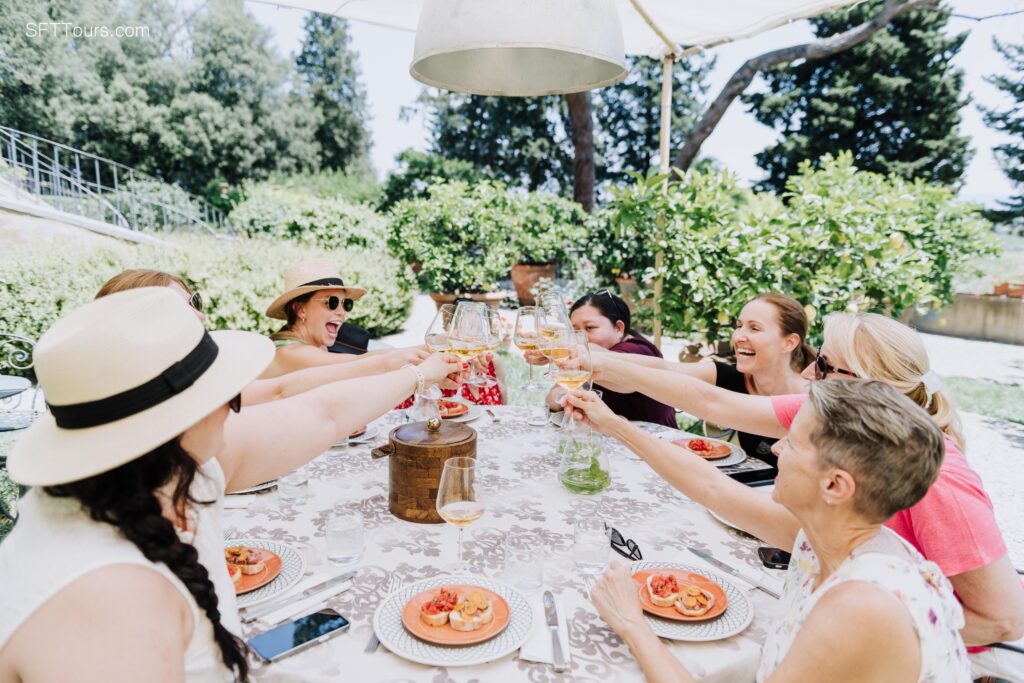
Our growth took off because Facebook started to recommend it. We believe that Facebook will always recommend good quality, engaged, clean, and well-moderated groups, so we focus on that, and Facebook recommends our group to probably hundreds of people every day.
Then the pandemic probably helped fuel this further with the fact that we could not travel but yearned to, so people turned to online communities. Groups on Facebook grew dramatically during the first few months; you can find stats from Facebook about it.
Expanding the Group on Facebook and Beyond
At the time, it was me and my business partner Meg Jerrard moderating the community, vetting and accepting new members, and approving posts submitted to the queue. And we were doing it 24/7, 365 days a year, without a break.
We never wanted to rely on volunteers we could not pay to run the group, and we did not want to rely on donations or external funding. We wanted to be a financially sustainable and independent business with a social impact mission that could do good in the ways that we felt were right without having to answer to anyone and without pressure to deliver profits to shareholders. We knew we could leverage our reach and community to help shape the travel industry and wanted to remain independent.
Solo Female Travelers expanded beyond the group at the beginning of 2020 when we created all other social media channels (Instagram, Facebook page, YouTube, TikTok) and our website, where we publish relevant articles and resources answering the most commonly asked questions in the group.
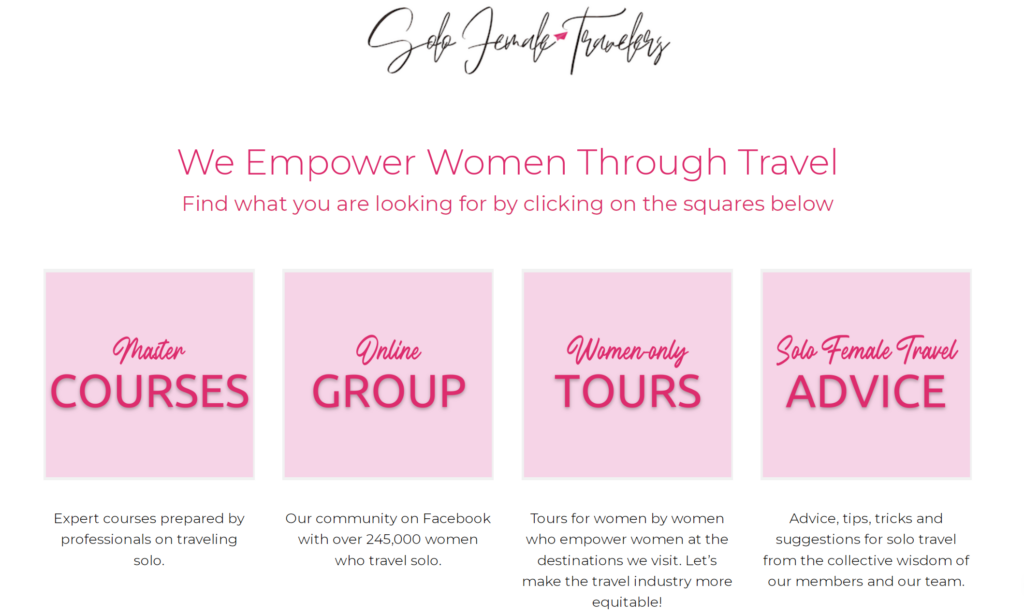
As veteran content creators and bloggers, both Meg and I knew that we could generate passive income through advertising and affiliates of our website, both through SEO and through the referral traffic generated via our channels.
But we knew this wasn’t enough to have a genuine impact. To find out how our unique model would work, we needed to better understand our audience.
Even though we are both experienced solo travelers with more than 50 countries visited alone, we are not representative of the solo female travel population. As a former strategy consultant, I needed to understand the market; I needed data.
So we launched the largest solo female travel survey, now in its third edition. We collected 5,000 responses to a detailed 30-question survey and sliced the data to find answers to our financial sustainability.
There were lots of useful findings, but the most obvious was the realization that launching tours for women by women could be the answer to our mission of helping shape the industry.
Women-only tours fill a need in the market and address all solo female travelers’ concerns and challenges: loneliness, boredom, anxiety, fear, lack of time/interest to plan a trip, willingness to meet new people, not having a travel partner to go with, etc. They also provide amazing experiences and bring economic and employment opportunities to female-owned businesses around the world.
This is how Solo Female Travelers Tours was born, in the middle of the global pandemic. We launched the first tours to Iceland and Tanzania in April 2021. Since then, we have taken guests on 25 trips and have 22 more scheduled this year.
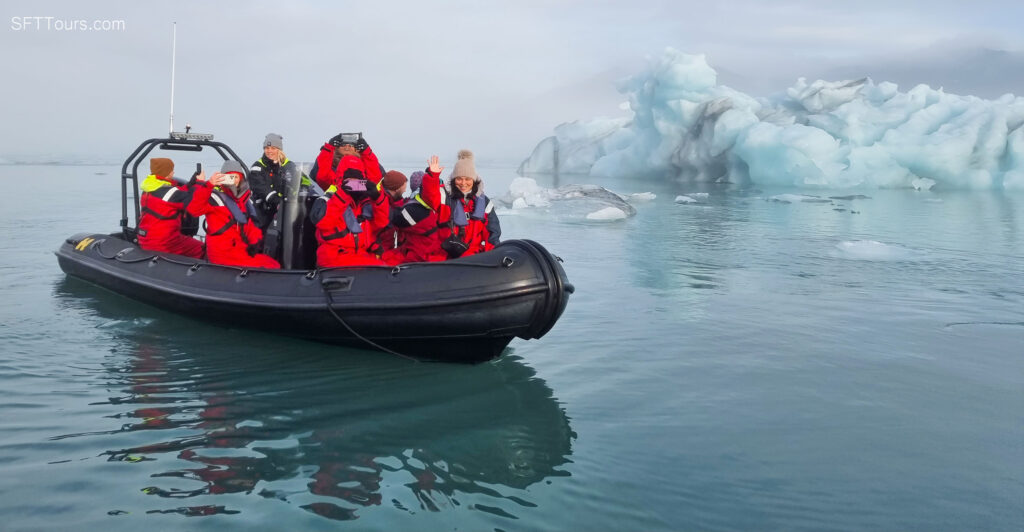
Mar’s New Growth Opportunities
Just after launching our tours, we were also accepted into Facebook’s Community Accelerator, which gave us the financial resources we needed to expand the team and bridge the time from launch to financial sustainability.
Every year the program is different. Our program lasted for a year, with 8 months of curriculum sessions and mentoring with a coach, where we had to define a plan of action, and funding was provided.
There was more funding at the end of the program, and additional funding went to a small list of shortlisted communities. The total came to 80k. This year’s is different. The sessions were less helpful because of my career in finance, business, and as a management consultant, but it did make us focus on a plan and execute it, and the funding was key.
Meg also got pregnant around that time, making the need to hire employees to cover for her maternity leave an even more urgent necessity.
Besides the original funding the program provided, we were shortlisted to receive additional funding.
In September 2021 we added three new members to the team, 2 full-time and one part-time, and shortly after, a second part-time member. We graduated from the Communities Accelerator in August 2022.
This year, we’ve just joined Barcelona Activa Construim en Femeni, a program for female-owned businesses that have a social impact mission, and our next goal is to continue fine-tuning and improving our awareness in the world of social enterprises and the ways in which we can continue to have a positive impact in the travel industry.
How Much Money Mar is Making
Solo Female Travelers is on track to generate 7 figures in 2023 through all our revenue streams.
Since launch, we have taken 235 guests on tour with us, and we have well over 300 guests booked on future tours. Our tours are priced between $2,995 for 5 days on the Amalfi Coast or Venice, to $8,500 for 15 days on Kilimanjaro with a safari extension.
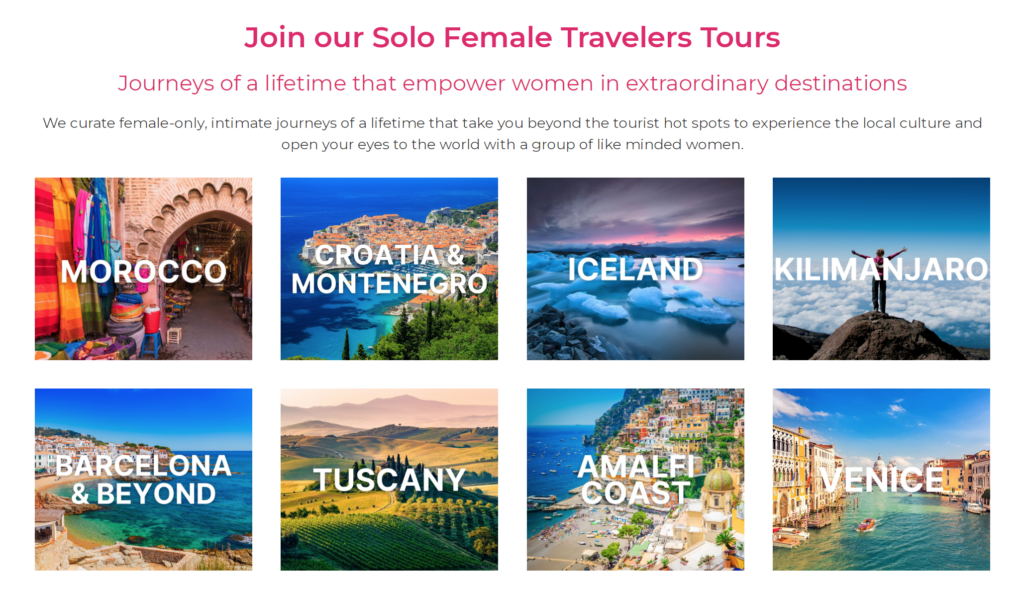
Our website receives close to 100,000 page views a month and is monetized in traditional ways including through advertising (we are on Mediavine) and affiliates.
We also run occasional promotional campaigns in the group, which now has 250,000 members, and in our newsletter, which has 60,000 subscribers and a 40% open rate. I send out one email every week and have been doing so without fail since we started three years ago.
We partner with very few brands that perfectly align with our mission and values and offer a service that is valuable to our members. Everything we recommend needs to be a win-win-win for us, the partner, and our audience and has to be a product we use ourselves.
For example, we ran a campaign with the Tourism Board of Korea promoting the destination’s wellness focus and temple stays.
Her Top Marketing Strategies
We are an integrated travel business built on trust and a 360-degree, self-sustaining approach.
Most tour companies use very traditional marketing channels: media & the press, online advertising, brochures, conferences, etc. but lack a community.
Publishing companies/blogs in the travel industry make money through affiliates and advertising, often based on SEO, and while this may be a 6-figure business, it is also extremely competitive and hardly passive.
Influencers and content creators make money from collaborations, brand sponsorships, and advertising. Some of them have an actual community, but conversations are one-way and trust is lacking (as demonstrated by our survey).
We put together the best of all these three worlds with our community-driven, trust-based holistic travel company for women by women that is trying to shape the travel industry to be more equitable for women.
We have direct and immediate access to our audience. When we think of a new article or tour, we can simply ask them directly and get an answer straight away.
Our entire business is built on trust and a long-term view. We don’t want to make money tomorrow at the expense of our long-term success and the trust we’ve built. Long-term trust has proven not only to be the best business strategy but also what aligns best with our personal values and our social impact mission.
Our community is a source of inspiration and ideas for content and new tours, and its members are also the readers of our articles and resources and the guests of our tours. We support them in their solo travel journey, and they consume our content (social and web) and come on our tours.
The group grows organically thanks to recommendations by members in other communities and through search. Referral traffic is significant, and word of mouth, which is free and entirely built on the value delivered and on trust, brings in new members to the group and guests on our tours.
Traffic on the website converts into possible future leads by joining our newsletter or our group. New group members are added to the newsletter when they join through new member entry questions.
Mar’s Focus on Female Empowerment
Ultimately, our tours help local female-owned and led businesses. They are led by a local female guide, they stay at female-owned hotels and eat at restaurants owned by women as much as we can (often this is not possible as there are none).
We also connect with and support local female entrepreneurs, activists, business owners, community leaders, and various women in positions of power.
We are about 80-90% female-run trips. Drivers are occasionally male, some businesses are owned by a family or a couple, and a very very small percentage are owned by men. We find them through contacts, because they reach out to us (we receive many emails a week), referrals, and through being on top of our industry and interacting with peers. We vet them through their mission and vision, a call, and then a scouting trip.
For example, in Tanzania, we collaborate with the Tanzania Women Guides Foundation to help pay for the certificates of local porters to become qualified Kilimanjaro guides. We then hire them as trainees on our all-female climbs so they get the experience they need to find jobs elsewhere.
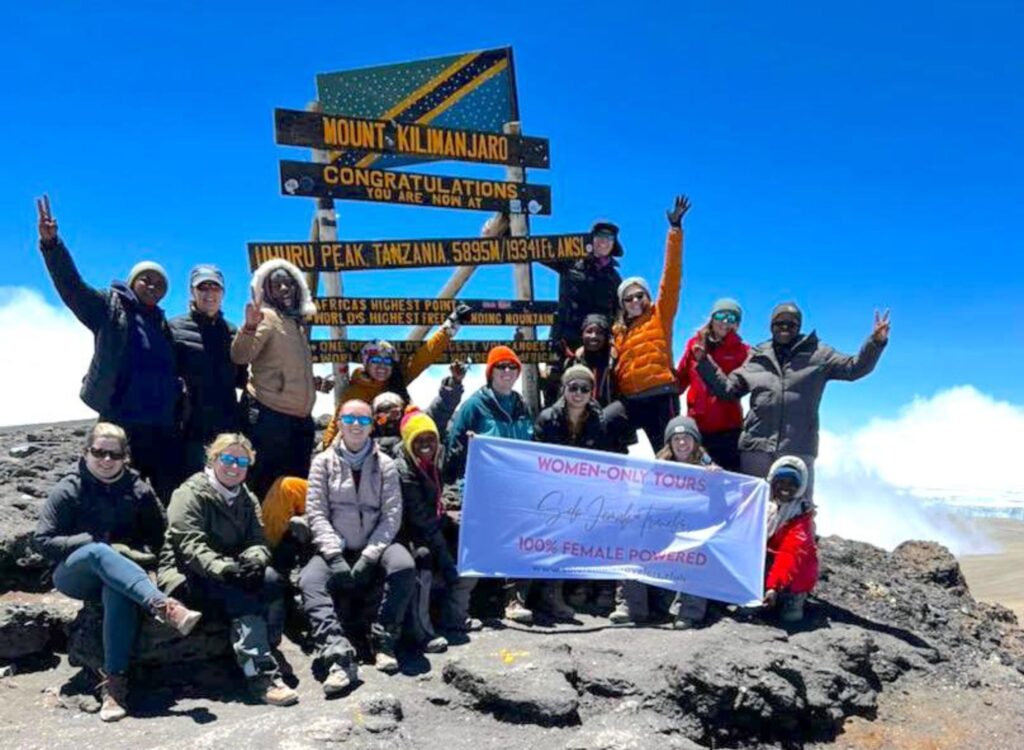
We also have safari trips where we will be helping newly certified female safari drivers with on-the-job training on our all-female safaris so they can get the experience they need to find employment.
Our audience knows we are honest and want to do good and regularly have our backs and recommends us to others. Trust takes years to build and is strengthened with every interaction that we have every day, but ultimately, it is the only passive income strategy we need.
The Importance of SEO
We combine SEO with what we know is a commonly asked question in the group. Because we have immediate access to our community, we also detect new trends as they happen and can anticipate new search words.
In terms of the process, I use KeySearch to do the keyword research, then put together a brief for our content Manager to write the piece. I then review it and she publishes it.
Link Building
We have been building links in many ways, but mostly by becoming a recognized industry expert. Again, this is a long-term strategy, but it is paying off.
We often get approached and quoted by the press around the world and have built numerous links from reputable high DR websites such as The Telegraph, USA Today, UpWorthy, Elle, Forbes, The New York Times, Oprah Magazine, etc. this way.
We keep an eye on HARO and respond to queries that are relevant. Occasionally, we reach out to online publications for interviews, podcasts, and guest posts but we have limited resources so this has been less important than we’d like it to be.
We also attend conferences, such as the UN World Tourism Organization, as speakers and have networked and been quoted/found this way. Being active on LinkedIn helps network and be known. Meg recently recorded an episode for a program on Australian national television and we have also been mentioned on TV stations from California to Finland.
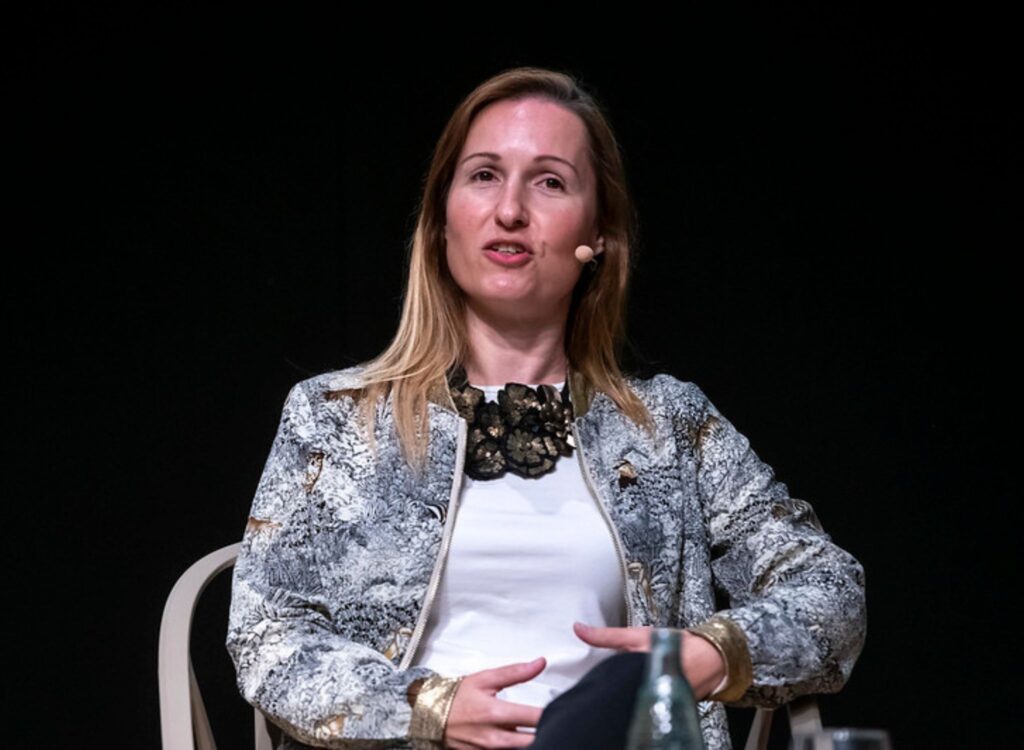
Our strategy is long term and we view media coverage as both a way to find new guests for our tours, continue our activism efforts to empower women through travel (we often talk about this topic for no other reason than to bring awareness to this travel style or break stereotypes and barriers), and build links which eventually drive traffic, bookings, awareness, etc.
It is all a virtuous cycle and we view it like that. We receive requests for interviews and media quotes almost on a weekly basis and rarely say no (unless the piece does not align with our mission). We’ll help students as much as we will help Oprah.
Our Solo Female Travel survey is a major source of credibility and attracts regular passive links.
Her Content Creation Process
I keep a spreadsheet of content ideas based on keyword research and questions asked in the group and give our content manager a list of content pieces to write every month with their corresponding keywords. I prioritize based on low competitiveness and also how often these are asked in the group.
If a content piece does not have SEO potential, but it can help our members, we will still write it. Some pieces we do not rank for but get read hundreds of times a month by our members.
At the same time, some pieces have low traffic but are specifically designed for our tour guests. I write packing lists and travel tips myself for our guests to read before a tour with the recommended items I pack for the tours since I have been to the destination before the trip, for scouting, and go on every first tour we launch. We receive affiliate commissions from what guests buy from those packing lists. Low traffic, but high conversion.
We don’t publish very often, though we aim to publish 2 to 4 articles a month. We have about 75 articles only plus the tour pages for each destination.
Mar’s Email List
We have a 60,000 subscriber list that grows by about 2,000-3,000 every month. We have a pop-up from OptinMonster promoting the tours, Mediavine Spotlight boxes throughout, and a signup box on the right sidebar of the website.
However, our biggest source of signups for the newsletter is our group. All new members get asked if they want to join and about 30% leave us their email. We have automated that process to automatically copy them over to Mailerlite and we have a simple welcome sequence.
I send out a newsletter every week. It’s detailed and packed with useful tips, advice, and news for our subscribers, and it also mentions our tours. We have a 40% open rate consistently and increasing a bit every week. I am aiming to have a 50% open rate by the end of the year.
Our newsletter gets a lot of responses and we see a traffic surge every time I send them. They are read and appreciated by our members and they are forwarded to others. This is the best investment we have made.
Mar and Her Business Partner, Meg
Meg and I started a tour business in the middle of the pandemic. When most travel businesses were closing or going bankrupt, we decided to launch our tours.
While this was very bold, it turned out to be a blessing in disguise. Busy partners who would not have had the time to meet small “nobodies” like us with no track record in the tour business had all the time in the world to chat to us and were willing to brainstorm and be more flexible.
Funnily enough, Meg and I have only ever seen each other in person in 2015 at a party during TBEX. Despite that, we have built a 7-figure business based in Spain, 50% owned by each of us, and globally distributed with employees from El Salvador to Australia on Google Meets and WhatsApp.
We speak multiple times every day and always joke that if anything happened to either of us the other one would be the first to know. Every day I wake up to WhatsApp messages from her and she from me.
When she went into labor, I was finishing off our first Solo Female Travelers Tour in Tanzania and was with the guests at our farewell dinner. I was the first person she told her waters broke because I needed to know she would be offline. It was Sunday and I had to take over the group management from her. Thankfully her baby came early but waited for our first tour to end!
Of course, these are the anecdotes and idiosyncrasies of being a small, female-owned and led startup that’s always on, the equivalent to our “garage-startup” story.
With our team’s expansion, we now have a company with more built-in “redundancies.”
Meg and I will finally meet in person this June when she will come to Europe to co-host our Greek Islands trip and we will have a team offsite with the entire team in Barcelona.
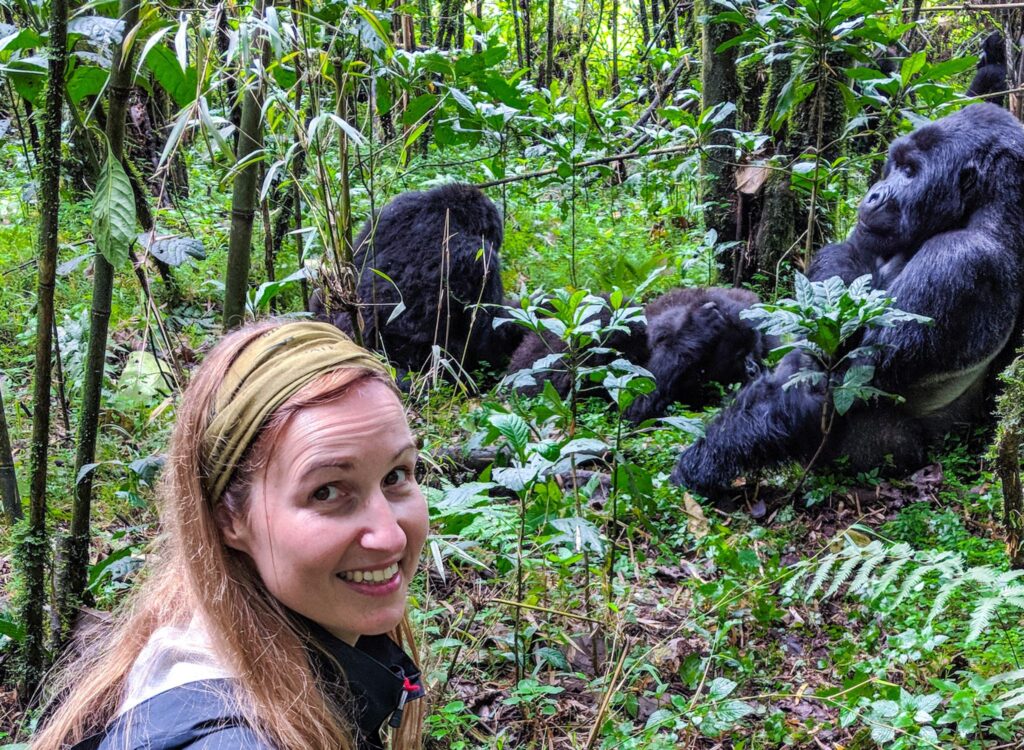
How Many Hours Mar Works on the Business
Being a small business that is global, remote, distributed, and based on an online community that is running 24/7 means we have little chance to disconnect.
We are a team of four managing the group in shifts during the week, but on the weekends it’s just Meg and I, so we have to be on it for a shift of 12 hours each.
In terms of my hours and schedule, these are very much dependent on where I am and what I am doing.
Typically, when I’m not traveling, I work 10 to 12 hours a day. I take breaks to go for long walks and watch some TV and I read a bit before going to bed. I also meet with friends and family and attend events.
If I’m in Spain, in between tours or scouting trips, I work weekends, too. If I’m in Singapore, where my partner is, I spend most of the weekend with him and get work done on Saturday morning and Sunday evening. I also take most of Wednesday off to do something together.
When I’m on a tour, I’m working all day long, tending to guests, participating in activities, and making sure everyone is having a fantastic experience from breakfast to dinner, then getting work done in the early morning and late evenings.
I’m finally trying to take some vacation trips for myself this year, after not being able to do so for the last three years. These are trips to places we do not plan to organize tours in and which are usually off the beaten path. My next trip is to Togo, Ghana, and Benin.
Her Favorite Resources
I have been listening to Niche Pursuits for several years and I also religiously listen to Authority Hacker. It’s been so long, I almost feel like I know them!
Other than that, I follow people that have a similar mission to ours on LinkedIn and get inspired by what they do. These are women in tourism, in gender studies, female empowerment, etc.
I’m following the competition and am constantly learning about the latest trends and what everyone else in the industry is doing. This is a legacy from my years of consulting and something I realize nobody does. Everyone is so focused internally, on what they’re doing, that they forget they aren’t the only ones in the market.
We follow the competition, and I use that as a very loose term to refer to basically anyone in the travel industry ecosystem and get inspiration and new ideas from them. I also help anyone who’s starting out and believe in sharing what I learn on platforms such as this one.
I believe a higher tide lifts all boats and there is space for everyone. I also believe in giving back to the universe, and while I’m not a religious or even spiritual person, I trust I will get the same back in other ways.
Her Top 3 Tools
We are not a very high-tech company in this regard.
WhatsApp is the core of our business and my personal life. I use it for messages, calls, and video calls, and coordination with our team and with Meg.
Google Suite is what our entire business is built on. Since I worked for Google for 4 years, I learned all the tricks, and we maximize the usage of all its features.
Our developer has created incredible internal tools for us based on Sheets such as the entire automated update sheet for our index, which updates the content on 220 pages from a spreadsheet, and we have amazing management reporting tools that are also custom-made by him.
For our tours, we built an entire in-house portal for our guests which our developer built over the booking tool we use for our tours, Youli.io, which is a fantastic booking tool for anyone starting out in the tour business, or wanting to switch to something robust.
Her Greatest Challenge
Being in the volatile travel industry as a startup in the pandemic era is a rollercoaster. Every day is a massive up or down.
One day you’re invited to speak on national TV and the next one your website gets hacked. Being able to live with the uncertainty and the constant extremes is tough mentally and physically, even for people as resilient as Meg and I.
For us, it’s also extremely hard to disconnect because when I do, if I’m on a trip or decide I need to take the day off, Meg needs to pick up my slack. As we continue to grow, our biggest priority is to achieve a better balance.
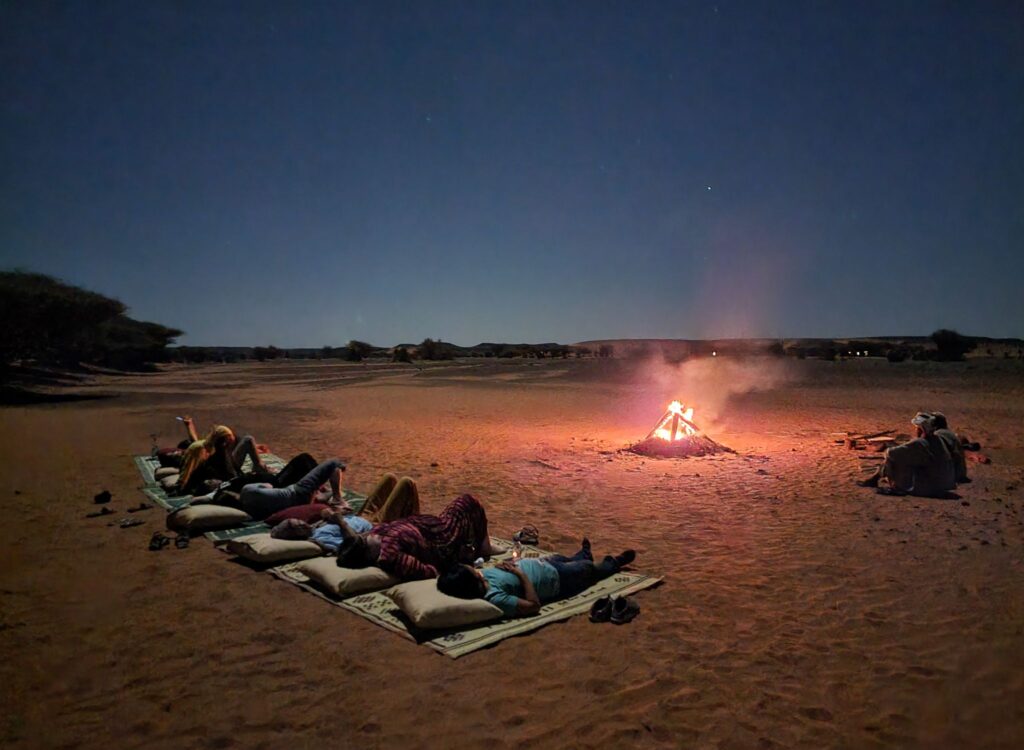
Being able to expand our team and members who are happy to work on the weekends while continuing to find ways to be more efficient in the ever-changing world of Facebook’s groups is our top priority.
We are also constantly struggling with saying no, slowing down, and not falling into the fallacy of chasing growth at a higher speed.
We want to expand at a pace that is sustainable financially and personally and this means saying no to guests who want us to add new destinations faster than we want to or launching more tours that we know will sell, so we can have some time to rest and avoid burnout.
We don’t want to be a victim of our own success. We didn’t start all this to be wealthy but to make a difference and it is important to keep reminding ourselves of that.
Mar’s Biggest Accomplishment
Maintaining our principles and not giving up our values for profits.
This is a fast-growing segment and every single tour company out there is launching tours for women. They don’t care about empowering women or equality, they simply see the business opportunity and the marketing power of pretending to care.
Remaining true to our mission and values when you are tempted to prioritize money is a daily conversation we have and something that we are very proud of. We don’t plan to ever change that; we will always remain true to our mission.
What She Wishes She Knew When She Started
I wish I had known how hard it is to truly make a difference and how unequal things were in many of the countries we offer tours in.
It’s easy to say that we support women, but when looking at the implications of that, we realized we had to go deeper into societal inequalities in many countries, and making a difference takes years.
If we want to provide opportunities to women in the places we visit and employ women only, we need to tackle the root of the problem. This means embarking on an educational and skills build-up drive, financing the training of future guides, hiring them as trainees, and supporting small businesses which would otherwise have no opportunities because the “big guys” in the tour industry do not work with “smaller guys,” they just keep giving business to the larger well-established businesses who often have no social focus.
We are doing this in Tanzania. We support training for female guides and then hire them on our tours as trainees and then full guides. These guides can then be hired by other tour companies and we also grow the pool of qualified female guides for our tours.
We also support our local partner by helping her create her website, expand her reach, improve her marketing efforts, etc., and by hiring her directly without intermediaries so she has a regular and reliable stream of customers that guarantees her income so she can focus on growing her business beyond us, too.
Wanting to change an entire industry requires a long-term commitment and the acknowledgment that those who we invest in will end up working for our competitors, and that’s fine with us.
Mar’s Main Mistake
My biggest mistake has been bad business partners who did not align with my values or vision and who were not at the same stage in their personal and professional lives. Eventually, the commitment is imbalanced and one of the parties (in this case me) carries most of the weight for the same return.
Finding the right business partner is critical and it is also the hardest part of a start-up’s success. I am lucky to have the best business partner now who is also one of my best friends. But I have also had the wrong partners before and those businesses ended up failing.
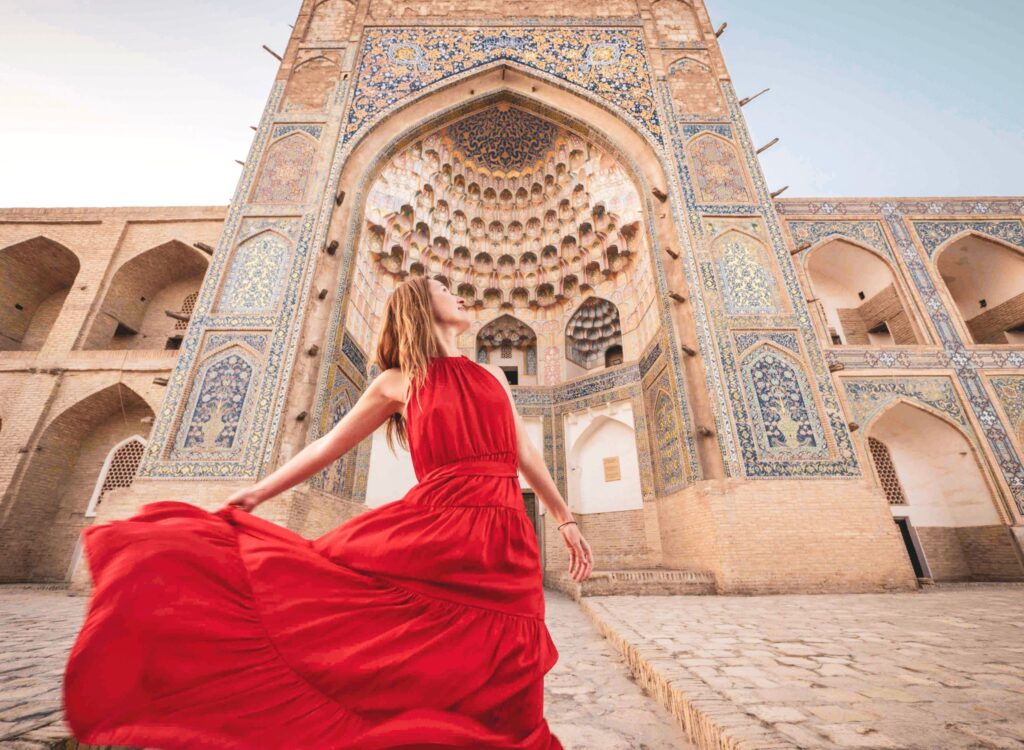
Her Advice for Other Entrepreneurs
Entrepreneurship can be a very lonely journey to do alone.
I know niche site owners tend to be singular, just one person, but unless you just want to create a site and flip it, my best advice would be to find the right partner who complements you and wants the same.
Long-term goals, passions, commitment, and the ability to contribute are all important aspects. If you don’t want the same in the long term and don’t share the same motivations and reasons why, you will eventually have to sell your part or buy theirs, or find a replacement.
Entrepreneurship, in my opinion, is a long-term commitment, and many get drawn in by a “shiny object mentality” and get tired pretty quickly when returns take time or challenges come knocking on their door.
If you’re interested in building a business (not just a website to generate passive income), think about what you really want and how you want it to be in 10 years, set long-term goals, and understand the implications on your day-to-day.
When I speak to friends who want to start a business, I need to remind them they should be willing to forgo a stable income for 2-4 years at least and be able to commit 100% of their personal life to the business for a similar amount of time.
If they aren’t, I don’t recommend they venture into the world of entrepreneurship and instead save or start planning, benchmarking, or researching until they are ready.
[ad_2]
Source link









